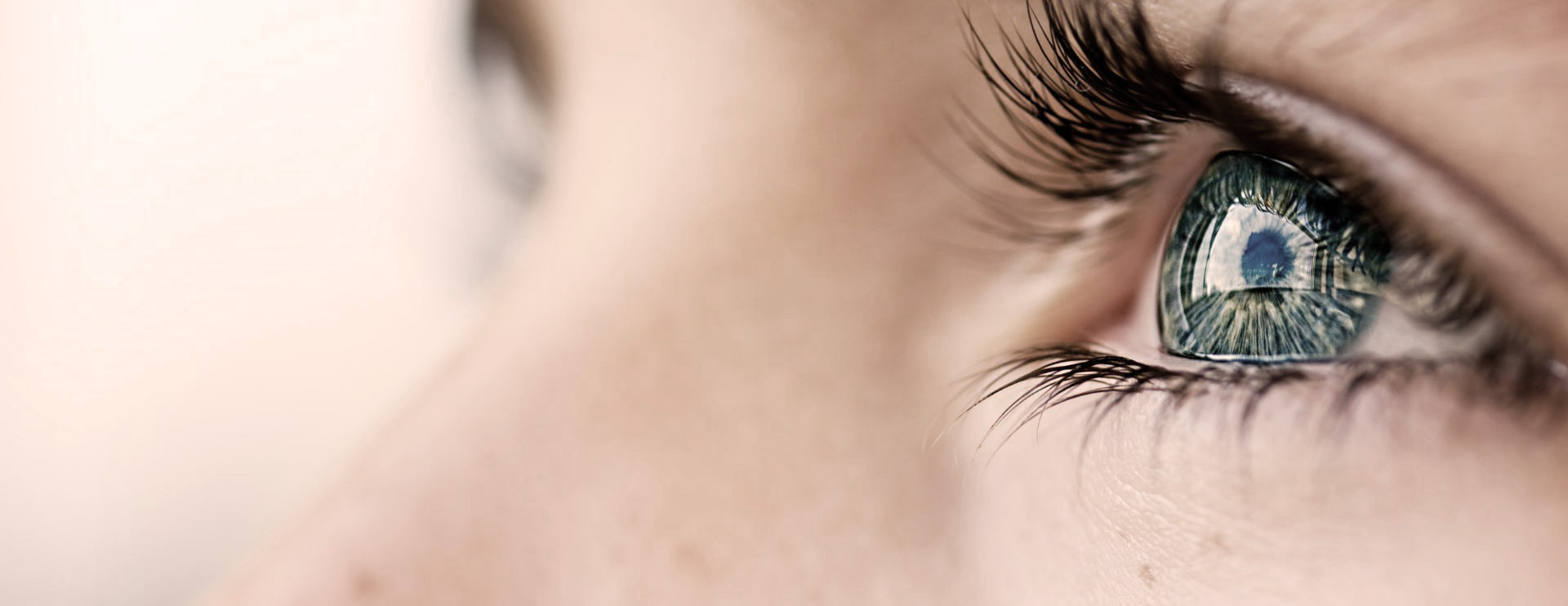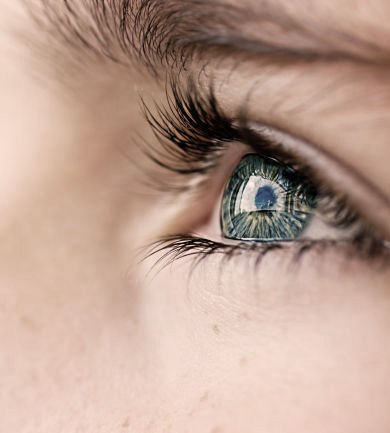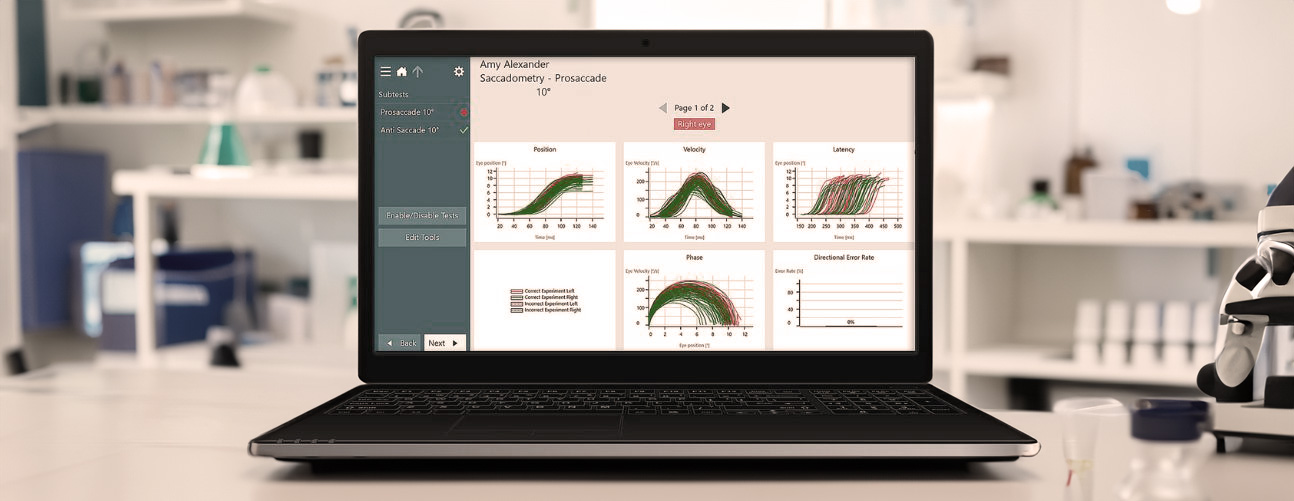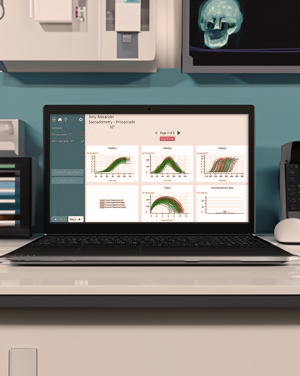

Video-oculography
Video-oculography analyses eye movements using high-performance video cameras that record voluntary or reflex eye movements, combined with a computer that analyses the characteristics of these movements. This examination is very useful for the medical diagnosis of many diseases that affect the nervous system and have consequences on vision, balance and cognitive abilities.
The eye movements studied (slow pursuit, saccades) are intended to keep vision focused on a target, during movements of this target or during head movements.


Why study the functioning of the oculomotor system ?
The study of the oculomotor system, which involves the brain, brainstem, cerebellum, oculomotor nerves and ocular muscles, is of great interest for diagnosis and monitoring:
- Psychiatric diseases (early diagnosis of Alzheimer’s disease, etc.).
- Many neurological diseases (multiple sclerosis, spinocerebellar disorders, autoimmune myasthenia, Parkinson’s disease, progressive supranuclear palsy, etc.).
- Specific language and learning disorders (dyslexia, dyspraxia, autism, attention disorders, ADHD, etc.).
- The cerebral consequences of a concussion, whether suffered in a sporting context (rugby, boxing, etc.) or other.
We analyse :
- For slow pursuit : the presence of saccades that interfere with pursuit, the gain (ratio of target speed to eye speed), in each direction and for each eye.
- For voluntary saccades: latency (the delay between target movement and activation of the saccade), amplitude (which can be normal, increased or decreased, especially in the case of damage to the cerebellum), eye velocity, phase of eye movement (velocity as a function of eye position), existence of square waves.
- For antisaccades, in which the patient is asked to look away from the target, the same parameters as for saccades are studied, with the addition of the % of saccade direction errors.
This examination is generally prescribed by a neurologist, psychiatrist, otorhinolar, orthoptist, speech therapist or neuropsychologist, as an adjunct to their specialist evaluations, to aid diagnosis or to monitor the effect of therapies that have been implemented.
It is a useful adjunct to the assessment of vertigo or balance disorders when a central nervous system origin is suspected.
